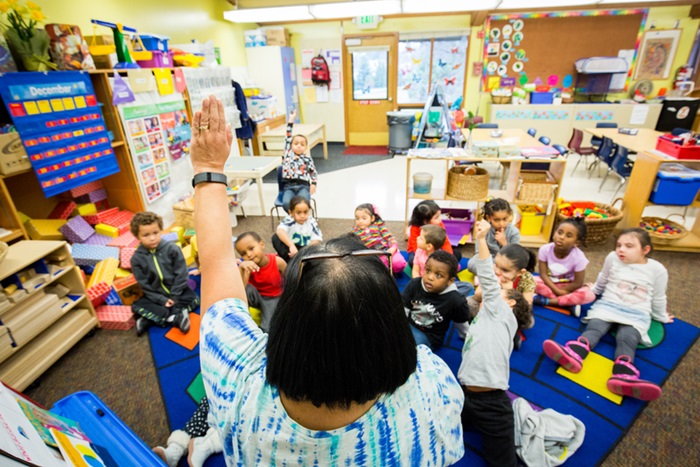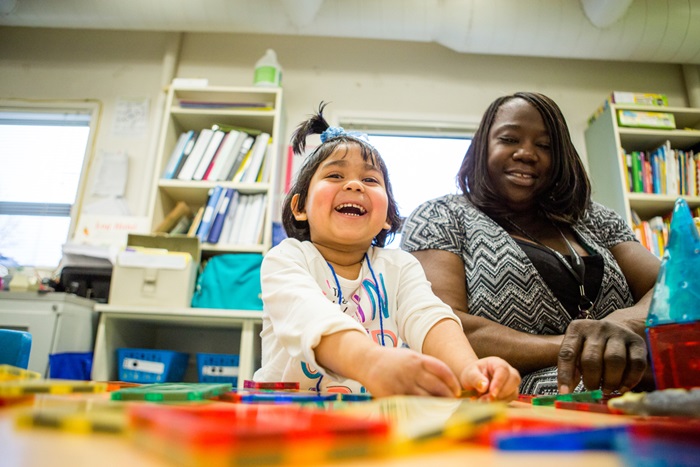There are some data points that you come across that forever change the way that you understand the world. Perhaps it's a particularly memorable story or a simple table or chart. For me, it was a single number: 3.6.
In context: "African American preschoolers were found to be 3.6 times as likely to receive one or more suspensions as white preschoolers."
This number contextualized something that I had seen and experienced in the communities where I used to teach. It was both deeply saddening and infuriating to me. The story that this number confirmed for me is that, too often, we are sending the message to African American children and their families that education is a privilege, not a right.
I mention this number because of the power that data has in transforming our understanding of problems in society. In my experience, data is particularly powerful when it is used to shine a light on lived disparities.
As someone who is very passionate about the power of data, I am particularly excited about work led by the Early Childhood Data Collaborative (ECDC) at Child Trends. Over the last year, the team at ECDC has convened a group of preschool experts to develop the System Transformation for Equitable Preschools (STEP Forward with Data) Framework. The goal of the STEP Forward with Data Framework is to provide a set of essential questions and accompanying metrics that preschool leaders can use data to answer to make preschool experiences more equitable for children, families, and the workforce.
 Carlise King |
 Dale Richards |
While they are working on putting the final touches on their data framework, we caught up with researchers Carlise King and Dale Richards, who are leading this work, to learn more about the Framework.
1. Why focus on preschool data and why now?
Carlise: Data has always been an essential resource for understanding where inequities are occurring and helping measure the progress to more equitable systems. However, we have found in our work that due to challenges – such as data not being collected, data being stored in antiquated data systems, or data not able to be accessed by preschool leaders – preschool leaders may not have the necessary tools to answer important questions. When preschool leaders collect and use data to its full and powerful potential, they are able to enact change to lead to more accessible and equitable programs for children and families.
People often think because public institutions collect a lot of information, then the data must be easy to access and use to inform continuous improvement. In fact, the amount of data preschool systems collect and how and why data are used varies widely. Yet we know that comprehensive and timely data can be an incredibly important tool for federal, state, community, Tribal, and preschool leaders as they work to expand and improve programs in ways that meet the needs of all families and help children learn the many things they need to learn.
For instance, some preschool leaders might be struggling to understand the changing demographics of communities being served in their programs because they are not collecting information such as a child’s race or ethnicity or whether they are a multilingual learner. Without that data, they can’t disaggregate their data. Other preschool leaders may have demographic data about the children being served, but do not have information to identify where there are barriers to enrollment and access to programs. Our goal is to provide a data framework that prioritizes uses of data to ensure all families are able to access a high-quality preschool program that meets their child’s needs.

2. How do you see data supporting efforts to create equitable preschool systems?
Dale: Data can be an important tool to signal when policies are improving systems and therefore improving outcomes for children and families. Without the right data, leaders at all levels lack a complete picture of what is working well and where investments are needed. For preschool programs – which we define as publicly funded educational programs that serve 3- and 4-year-old children – data can paint a comprehensive picture of the diverse array of available programs, the ways that programs support children and their families, workforce strengths and needs, and what service gaps exist.
For example, consistent attendance is important for success, even during the early years, and yet we know too often that children who have been historically marginalized by society experience barriers to preschool attendance. Therefore, preschool leaders should disaggregate their data to see where there might be disparities for certain populations, such as children of color, families experiencing poverty, or children with disabilities or developmental delays. Over time, data can show how well investments are working and where changes are needed.

3. Can you share more with us about the STEP Forward with Data Framework and its purpose? Who should be using the Framework?
Dale: We know from existing research that high-quality preschool programs can be a critical support for families, but we also know that many families across the country aren’t able access them, and if they do, not all families have the same positive experiences and outcomes from participating. The STEP Forward with Data Framework will provide preschool leaders a structure to paint a more cohesive picture of how well a preschool system is serving all children and families, with a focus on groups who historically and continually have faced barriers in accessing preschool.
For example, the Framework will provide a consistent set of metrics, aligned with essential questions for leaders to answer, about accessibility, experiences, and outcomes of children, families, and the workforce that leaders can use to understand what is working well and what challenges exist for children, families, and the workforce. We hope it will help leaders assess data gaps and integration needs and identify clear action steps for creating a more equitable preschool system based on the data they collect and the questions they are answering.
If you’re interested in learning more about our essential questions, we describe them in a recent blog.

4. Can you talk about how the Framework will be used to create more equitable outcomes for children?
Carlise: Preschool systems will be stronger and better when access and experiences are equitable for all. There is an extensive research base that tells us specific groups of children, families, and workforce members experience systemic and historic barriers in accessing early childhood and preschool programs.
As we describe in our recent piece on what we call our focal populations, “we define equity as both a process and an outcome. As an outcome, [it] is the condition achieved when personal characteristics outside individuals’ control (e.g., race, ethnicity, gender, sexual orientation, ability status, religion, age, class, etc.) no longer predict, in a statistical sense, how they fare. As a process, equity is applied when those most impacted by structural inequity are meaningfully involved in the assessment, creation, and implementation of the institutional policies and practices that impact their lives.”
Snow Li is a program officer on the Early Learning team, where she focuses on Early Learning data systems and assessments. Snow was a former special education teacher and a member of the Assessment Team at ANet, where she designed early elementary assessments, instructional resources, and PD.
Learn more
-
Check out the ECDC project page which houses all STEP Forward with Data materials
-
New America Blog: Preschool Development Grants Provide Opportunities to Support Equity Through Data
- New America Blog: Pre-K Data in Practice: Improving Learning Experiences for Children of Color
-
Sign up for the ECDC newsletter
-
Email [email protected] for more information
